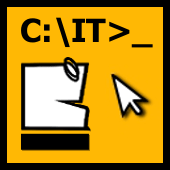The application of TRIZ in database structures and programming
SECTION I. ABOUT THE DATA
One of our projects contains the following tests for hiring programmers:
"There are three groups of organizations (legal entities):
- Our companies,
- A certain number of companies of the Client,
- A few companies of our suppliers.
Sometimes the same companies can be in different groups simultaneously (ie, sometimes some of our Customers can be our suppliers). There are people who:
- Work in the above-mentioned companies:
- in our companies,
- in the companies of our Clients,
- in the companies of our suppliers,
- Do not belong to any company - individuals who buy our products.
Build a database structure".
Let us consider three levels of answers: weak, medium, and ideal (which we will try to build using TRIZ).
First solution ("Weak")
The applicant created following tables:
1) Table "Firms"
Where field Firm_id – is a primary key. The type of company is given in text form.
| Firm_id | Firm_name | Firm_type |
|---|---|---|
| 1. | Pan Myslenek Company | Our company |
| 2. | TRIZ-RI Group | Client |
| … etc. | ... | ... |
| N. | Sychev&Co Ltd | Supplier |
2) Table "People"
Where field People_id – is a primary key, and field Firm_id – is foreign key linking to the table Firms.
| People_id | People_name | Firm_ID |
|---|---|---|
| 1. | Alexander Sychev | 1 |
| 2. | Alevtina Kavtreva | 2. |
| ...etc. | ... | ... |
| N. | Sergey Sychev | N. |
Obviously, this solution is weak. For example, you can't register an individual as a Client, and many other things do not turn out well. As they say: "The database structure is not normalized".
Since the solution is weak, the requirement was strengthened to stimulate the applicants imagination: "You must build not a simple, but an ideal model of data organization", that is, one which does not have to be changed in case new conditions, not considered earlier, appear. Afterall, you know that this is a standard requirement.
Second solution ("Medium")
The applicant created the following 5 tables:
1) Table "Agents"
Where the field Agent_id is the primary key. There can be any number of property fields (all necessary information: address, phone number, ownership, etc.).
| Agent_id | Agent_name | ... |
|---|---|---|
| 1. | Pan Myslenek Company | ... |
| 2. | TRIZ-RI Group | ... |
| ...etc. | ... | ... |
| N. | Sychev&Co Ltd | ... |
2) Table "People"
Where the field People_id is the primary key. There can be any number of property fields (all necessary information: address, phone number, email, etc.)
| People_id | People_name | ... |
|---|---|---|
| 1. | Alexander Sychev | ... |
| 2. | Alevtina Kavtreva | ... |
| ...etc. | ... | ... |
| N. | Sergey Sychev |
3) Table "Agent_People"
Here both fields - Agent_id and People_id – are primary keys. The field Agent_id is a foreign key linking to the table Agents, and the field People_id is a foreign key linking to the table People.
| Agent_id | People_id |
|---|---|
| 1 | 1 |
| 3 | 2 |
4) Table "Agent_types"
Where the field Type_id is the primary key.
| Agent_type_id | Agent_type_name |
|---|---|
| 1. | Our company |
| 2. | Client |
| ...etc. | ... |
| N. | Supplier |
5) Table "Agent_agent_types"
Here both fields – Agent_id and Type_id - are primary keys. The field Agent_id is a foreign key linking to the table Agents, and field Type_id is a foreign key linking to the table Agent_types.
| Agent_id | Agent_type_id |
|---|---|
| 1 | 1 |
| 3 | 2 |
With this approach, all entities ("companies", "people") and their types are described separately from the interrelations. Hence, it is a good approach, because, in case of unrecorded situation, we simply register the new data in the dictionaries, we don't have to reorganize old tables or create new ones.
For example, if we need to register an individual - as a Client, or as a Supplier or even as our own staff - we just register a new type of agent "Individual" and fill the relevant tables, without creating anything new. Furthermore, in this implementation, the term "Firm" has been smartly replaced by a more abstract term "Agent", which allows to consider "company" as a special case, along with other types of agents.
This, of course, is a good thing. And if you look at the project more widely, it becomes clear that the addition of new entities will not require any changes in program code. As they say: "The structure is normalized."
During the interview, the developer was asked why the table "People" and the corresponding interrelations are needed in this case. After all, if an individual is registered as an agent, it is possible to add various types of agents: "Our employee", "Employee of a Customer", "Employee of a Supplier" etc., just like we did with the types of companies "Our company" etc. And leave only 2 tables: "Agents" and "Agent Types" instead of 5.
The developer reasonably answered that "people as people", the "people as agents" and "firms as agents" may have different properties, which must also be stored properly. Imagine that an "Agent" has a specific property "Date of the last transaction" or "Ownership", and "Our colleague" does not have such properties at all. These fields are not needed to describe the employee. Of course, in some particular cases we can possibly somehow unify the properties of different entities, but in general it should be assumed that they are just different.
We leave a bookmark here and move on.
We have discussed the positive sides of the second solution. Now let's discuss the negative ones.
So we are following the logic of this solution. Imagine that we would like to add not just a variation of existing entity ("people", "agents") but an absolutely new entity (with all of its properties), for example, documents. We would have to create a new table "Documents":
| Document_id | Document_name | ... |
|---|---|---|
| 1. | Contract N 7 ____ | ... |
| 2. | Invoice N 15 _______ | ... |
| 3. | Сertificate N 8 ________ | ... |
as well as the table which stores types of documents:
| Document_type_id | Document_type_name |
|---|---|
| 1. | Contract |
| 2. | Invoice |
| ...etc. | ... |
| N. | Сertificate |
Then create interface tables describing the interaction with people and agents. These are the tables:
| Agent_id | Document_id |
|---|---|
| 1 | 1 |
| 3 | 2 |
| People_id | Document_id |
|---|---|
| 1 | 1 |
| 3 | 2 |
The number of M interface tables connecting N entities is calculated as follows:

Hence, if we add K new entities, the number of interface tables will grow according to the formula:

Thus, if initially we had 2 entities, adding the third one will require 2 new interface tables to be created. Adding another – 3 more. Another – 4 more. And 5 more for the next one etc. n-1 for the n-th entity.
And that's not counting the number of tables which describe the entity itself. In the current example, there are two for each. So for this example, the number of tables increases according to formula: .
.
So for 12 entities we can end up having 90 tables, which radically reduces comprehensibility and complicates maintenance.
This is an obvious disadvantage. Therefore, method 2 can be called a "compromise". It is clearly better designed than the first one, but the idea has obviously not been thoroughly explored. And the reason for that (back to the "bookmark") is unresolved contradiction:
- "The properties of different entities should be different, so we can work with entities according to their features, and should not be different, so the number of tables would not increase.".
This contradiction was not resolved by the author of the second solution. Now let's try to apply TRIZ.
Third solution. Building the ideal database design.
The name that can be named is not the eternal name.
Lao Tzu
Let's try to resolve the contradiction described in the previous paragraph and to create a truly ideal structure to store any data we want. Let's change a little bit the classical formulation of TRIZ in our case and write: "There is no object, but its data is stored."
But what is the record of an object? Strictly speaking, the informational system can't contain actual object by any means. Since we are dealing with information, it only contains objects descriptions. And what is the "objects description"?. It is a set of "keys" and "values." And what about the names of the objects? See epigraph. For the informational systems, the quote of Lao Tzu should not be understood as a metaphor, but literally. There are no objects in the database, there are only keys and values.
Let's do so, shall we?
Entities (object’s keys)
| _id integer primary key autoincrement |
|---|
| 1 |
| 2 |
| 3 |
| 7 |
| 11 |
Properties (of any entities)
| _id Integer foreign key (Who has current property is stated here) | Names (Name of property) String | Values (Value of property) String |
|---|---|---|
| 1 | ||
| 2 | ||
| 2 | ||
| 7 | ||
| 11 |
Actually, the table Entities is redundant, because it serves only for the purposes of distribution of a unique key Id. If we can generate such a key independently, we can get rid of this table so only the table Properties will remain. It is easy to create one, besides, many of the existing DBMS already have methods like this.
Only table Properties remains.
Properties (of any entities)
| _id Integer (Who has current property is stated here) | Names (Name of property) String | Values (Value of property) String |
|---|---|---|
| 1 | ||
| 2 | ||
| 2 | ||
| 7 | ||
| 11 |
This approach provides a “one to many" relationship. Any data can be obtained with a single query, hence good performance is achieved. That's a good point. However, if there are entities with the same properties, we end up having identical records in the table Properties. That's a problem. A significant problem.
Let us try, for example, to store documents we make when dealing with our counterparties. Let the document type ("Document_Type" property) always be chosen from a fixed set of options (let it be "account", "false", "agreement", "acts", etc.), and let the vendors often be the same ("Provider" property).
Then if we make, for example, three thousand deals it will result in a creation of 3000 new records, which will have identical properties "Document_Type" and "Provider". 6000 identical records in total. And that is so if we assume that only two of all properties are the same. In general, if we add to table Properties m entities with n properties, k of which are identical (k<=n), it will generate m*n new records (k*m of which are identical). This base will grow rapidly, but will work fast for its size.
Let us improve the solution following the general logic of normalization, moving all values from the table Properties (except Id) into separate tables. That means that two new tables are created: table Names and table Values. They will store only unique names and values of properties respectively, which will then be "gathered into sets" of properties in the table Sets.
Keys in the table Sets are not unique. They link the ID of the set of properties with properties themselves.
Sets (of properties’s names and values)
| id integer | name_id integer foreign key table Names | value_id integer foreign key table Values |
|---|---|---|
Names (of properties)
| _id integer primary key autoincrement | Names String |
|---|---|
Values (of properties)
| _id integer primary key autoincrement | Values String |
|---|---|
Any data can be obtained using a single query, thus good performance is achieved. Duplicate records are not created as well. If we add m sets with n names/values of properties, k of which are identical (k<=n), it will generate n-k new records in table Names/Values and m*n in table Sets. (If k=n, new records in the table Names/Values are not created at all).
Thus, space is saved when we add sets with identical properties. The size of such database will grow much slower because when you add duplicate name/value only table Sets increases in size.
Here we have to make the necessary methodological remark: There are no objects, there are no names of objects, there is no evidence that they exist at all ("There is no spoon") There are only properties (names of properties, values of properties and sets of properties). You can gather these properties in any way you want. You can mark gathered “set of properties” with a tag (give an appropriate name), but you, as a developer, should not consider this "pack" of properties as an "object" because it entails the inertia of thinking. Spoon (fork, groundhog) does not have properties, but "this pack of properties" we (if we have such a weird idea) label as "spoon", this as "fork ", this as "groundhog ".
You have obviously already noticed that the initial contradiction: "Properties of different entities should be different, so we can work with entities according to their features, and should not be different, so the number of tables would not increase." - is eliminated.
We can now customize any properties into a corresponding Set and treat them in whatever specific way we want. In addition, new tables are not required. So, we have a universal interface between any arbitrarily specific, entities.
But let us continue curtailing:
The table "Names" contains two columns "Id" and "Names". both storing only unique values.
Names (of properties)
| _id integer primary key autoincrement | Names String |
|---|---|
But the second column of this table is used only for the understanding of what we are working with only by the programmer (not by a user, not even by a program), and for nothing else. In addition, the table Names stores the relation "unique to a unique". So, you can use only one field.
Since the search through numerical identifiers is faster, you can just throw column Names away, leaving only the column Id. (How to do that without the programmer losing comprehension will be described further on.)
Then, since there is only one column Id, you can throw away the entire table Names and track identifiers we put in table Sets in field Name_id.
Thus, only two tables remain in our database: the table Values (same as it was) and the table Sets, which now has two primary keys: Set_id and Name_id, and key Value_id as a foreign key linking appropriate value in the table Values.
Sets (of properties’s names and values)
| Set_id (integer) | Name_id (integer) | Value_id (integer foreign key table Values not null) |
|---|---|---|
Values (of properties)
| Value_Id integer primary key | Values |
|---|---|
The table Names has disappeared (again remember Lao Tzu :)), or rather, has become ideal. Now it is gone, but its function is completely performed. Again remember TRIZ.
So now we have a significant gain in performance due to the fact that the whole table was thrown away. Before that, it was necessary to go through this entire table in order to determine the numerical identifier corresponding to a string parameter. Now this operation, which required a comparison of a large number of strings is terminated.
Let's return to our example and populate our universal and simultaneously specific database:
Sets
| Set_id (integer) | Name_id (integer) | Value_id (integer foreign key table Values not null) |
|---|---|---|
| 1 | 4 | 3 |
| 1 | 3 | 1 |
| 2 | 2 | 1 |
| 2 | 1 | ... |
| ... | ... | ... |
Values
| Value_Id | Values |
|---|---|
| 1 | Pan Myslenek Company |
| 2 | TRIZ-RI Group |
| 3 | Alexander Sychev |
| 4 | Сertificate N 8 ________ |
| 5 | ...etc |
One could argue that the situation has become less readable. For example, we do not see any human readable information in the field name_id in our first table, and we have no idea what entities we are dealing with. We only see their id (4,3,2,1). The machine understands everything and works fast, but for humans it is not very convenient.
Queries also end up being barely readable as well, for example: get(2,1,null);
(Note: here and in the following examples we will use php as our programming language, identical examples in other languages may be given.)
Once again we have a contradiction:
- "Name should be called explicitly for the sake of convenience of the programmer, and should not be called at all, so that machine does not look through the whole new table, which is, by the way, filled with string data." What should we do?
We solve this contradiction by moving the list of names out of the "search area" since it is the zone with contradiction. It is possible to determine which id corresponds to representation which is readable to the programmer outside of the database - at the program level.
For that purpose let us create a dictionary (for example in header file), which contains a list of constants as follows:
$Document_name = 1; $Provider_name = 2; $Agent_name = 3; $People_name = 4;
After that our queries gain a readable form (for example): get(2,$Document_name,null)
So no extra table, and great performance.
Note about the predecessors: Here we should properly refer to a pretty well-known model of data organization called EAV (Entity - Attribute - Value), which is pretty similar to the structure described above but was created much earlier. And we point that out with great respect.
But at the same time, we want to point out differences in our implementation. These differences allow to get rid of some problems, which are common not for EAV itself, but for the most well-known but not so well made implementations of this progressive model
The difference is described in the previous paragraph: one should not store descriptions “made for humans” in the database. In the last “curtailed” variation, we have not 3 but 2 tables. The table which in EAV is called Attribute, and in our case called Names, is eliminated and replaced by a list of constants stored in a header file. That gives a significant improvement in performance without any inconveniences for the programmer.
There is another major difference in described implementation. All Values are stored in a separate table consisting of 2 columns ID and Values. It means that “values” are separated from “Sets” and not mixed with them, which firstly dramatically decreases the size of the database and secondly makes it work a lot faster.
The topic of this database's performance will be discussed below in section 3. We hope that, considering the facts described it the article (above and below in section 3), all statements about the poor performance of databases with “Key-value” ideology will turn into myths and legends. But we insist on using this exact implementation which we described in this publication. Let's call it “EAV as Owls”.
SECTION 2. ABOUT THE CODE
Now consider the possibilities which the programmer gains using this data structure.
Supposing we need to make a selection (get). Now we can write universal operations in this style:
$searches = array(); $names = array (list all required parameters here) for($names as $index => $name){ $searches[$index] = get($set_id,$name,$value); // "Gene" of the data structure }
For example, the following code will find all people, all agents, all documents and all goods:
$searches = array(); $names = array($people,$agents,$documents,$goods) for($names as $index => $name){ $searches[$index] = get(null,$name,null); }
Where null is a pointer to a void, because the variables $set and $value are not used in the request.
(Note: In order to simplify and unify the code, we will try to use this rule regularly: structure $setID,$name,$value will always be used in the corresponding function, but when a particular variable is not needed, we will pass the "pointer to void" instead).
So if any new entity appears (for example, "Transaction"), and we need to expand the query to receive "all transactions" as well, we do not need to write any additional features, we only write corresponding entries in the table Values and Sets of our database (if such entities did not exist before) and specify the "transactions" in the "get" function:
$searches = array(); $names = array($people,$agents,$documents,$goods,$deals) for($names as $index => $name){ $searches[$index] = get(null,$name,null); }
You may agree that if data structure was different, we would need to do something like:
getAllpeople();
getAllAgents();
getAllDocuments();
getAllGoods();
getAllDeals();
And that is pretty bad.
But let's move on. Let's go back to our contradiction: the properties should be different and should not be different. But let us no longer consider it at the level of the data structure, but at the level of the program code as well.
First let's select "people as people", and display the universal properties for each of them, such as name, gender, phone, email, weight, height, eye color, etc.
Of course, we do not write function for each property:
$people = getpeople();
foreach($people as $people){
echo get_people_name();
echo get_surname();
echo get_phone();
echo get_email();
echo get_weight();
echo get_height();
echo get_eye_colour();
}
Let's make our request in the same way we did before:
$people = get(null,$surname,null);//assuming that the property "name" is for people only $properties = array($people_name, $surname, $sex, $phone, $email, $weight, $height, $eye_colour); foreach($people as $person){ foreach($properties as $property){ echo get($person,$property,null); } }
Now let's choose a different context and select "people as agents". Let us be interested in other properties. No eye color, height or weight, but, for example, details of the transaction made with us and related products and documents in addition to the contact itself.
We do not write new functions, but only change the parameters in the marked line:
$people = get(null,$surname,null); $properties = array ($people_name, $surname, $contracts, $goods, $documents...list of all required parameters); foreach($people as $person){ foreach($properties as $property){ echo get($person,$property,null); } }
It is clear that if we constantly require a different "set" of settings (people in different contexts: "people", "our employees", "agents", "as employees of the suppliers", "as employees of the Customers company" "as lovers" etc.), we will always use just one function:
$people = get(null,$surname,null); $properties = array (list all required parameters here); foreach($people as $person){ foreach($properties as $property){ echo get($person,$property,null); } }
We got a function close to the ideal, which does not indicate any entity explicitly (hence, after any reorganization of data, the code does not change at all), but, nevertheless, it responds properly depending on the parameters passed.
Now let's standardize a requirement to the parameters of the "ideal function". Let it always require only 3 parameters: "Id of set of properties", "name of property", "value of property", which represent the "copy" ("gene") of our universal data structure described above (Set_id, Name, Value):
- any_function ($Set_id, $Name, $Value) or just any($Set_id, $Name, $Value)
where:
- Set_id - Id of set of properties
- Name - name of property
- Value - value of property
Another methodological remark: apparently, code and data are not stored together. As you see, abstraction conducted fairly seriously (see for yourself), and normalization is so strong that even reached its dialectical negation, but there is no encapsulation in OOP sense at all. We do not mix the data and code that works with it, hence we don't create any objects, neither in general sense nor in OOP sense. The code is universal so it works with any type of data, and any type of data also does not have its "personal code". We do not make "smart objects" we make "dumb data sets" and "dumb functions" seperately from each other. The difference with the OOP is obvious.
Let us continue the optimization. Any good manual on database design mentiones the CRUD, and that all work with databases is reduced to four operations: "Create", "Read", "Update", "Delete".
Let's implement this set of tasks here, considering the idealization of code described above. We shall implement the "dialog" between the program and database via the universal interface ("the kernel"). This interface should be done in such way that the program should not know anything about the databases structure (in a way it should be done by all canons) and the database as well should not care what program is using it. Here we will only list key "kernel functions" (it is an article after all), and if we recieve numerous requests to publish the entire kernel, we will publish it separately.
Key kernel functions are: "Get", "Add", "Delete".
- Read: get ($SetId,$Name,$Value)
- Create & Update: add ($SetId,$Name,$Value)
- Delete: delete ($SetId,$Name,$Value)
Let us examine them in detail, as they are carrying out the mission of relieving the programmer from a necessity to know the structure of a database and even necessity to know the SQL language. Firstly, because, considering what was said above, the entire SQL language is reduced to very primitive lines, and secondly, "kernel functions" are creating these lines, and the kernel itself sends retrieved data where it is required.
Get ($Set_id, $Name, $Value) //Gets a record from the database, depending on the parameters passed:
1) Get (null, $name, $value) // Returns identifiers of sets (Set_id), which have the property with name Name with value Value.
2) Get (null, $name, null) // Returns the identifiers of sets (Set_id), which have a property with name Name.
3) Get ($Set_id, $name, null) // Returns the value of the property with name Name and set identifier Set_id.
4) Get ($Set_id, null, $value) // Returns the name of property with set identifier Set_id and value Value.
5) Get ($Set_id, null, null) // Returns all properties of set with identifier Set_id.
As stated above, the Get function is also responsible for the automatic creation of SQL queries.
Supposing we want to get a property of set with the identifier Set_id = 1.
We should fill in the functions parameters Get ( $Set_id, $Name, $Value) as follows:
get (1, $name, null)
and following SQL-queries will be created and executed:
SELECT VALUE_ID FROM SETS WHERE SET_ID = 1 AND NAME_ID = 2; SELECT VAL FROM VALUES_STRING WHERE VALUE_ID = 3;
If we change the input as follows:
SELECT NAME_ID,VALUE_ID FROM SETS WHERE SET_ID = 1; SELECT VAL FROM VALUES_STRING WHERE VALUE_ID = 1; SELECT VAL FROM VALUES_STRING WHERE VALUE_ID = 2; SELECT VAL FROM VALUES_STRING WHERE VALUE_ID = 3; SELECT VAL FROM VALUES_STRING WHERE VALUE_ID = 4; SELECT VAL FROM VALUES_INT WHERE VALUE_ID = 6;
Or as follows:
SELECT VALUE_ID FROM VALUES_INT WHERE VAL = 23; SELECT NAME_ID FROM SETS WHERE SET_ID = 1 AND VALUE_ID = 6;
Or as follows:
SELECT VALUE_ID FROM VALUES_STRING WHERE VAL = 'admin@triz-ri.com'; SELECT SET_ID FROM SETS WHERE NAME_ID = 3 AND VALUE_ID = 9;
Or as follows:
SELECT SET_ID FROM SETS WHERE NAME_ID = 0;
Or as follows:
SELECT VALUE_ID FROM VALUES_INT WHERE VAL = 32; SELECT SET_ID FROM SETS WHERE VALUE_ID = 10;
Now let's take a closer look at the Add function:
Add ($Set_id, $Name, $Value) // Adds record to the database (or updates it), depending on the parameters passed:
1) Add (null, $Name, $Value) // Creates a new set with property which has name Name and value Value and adds it to the database
add (null, $login, "admin3") - will create and execute following SQL-queries:
SELECT VALUE_ID FROM VALUES_STRING WHERE VAL = 'admin3'; UPDATE OR INSERT INTO VALUES_STRING (VALUE_ID, VAL) VALUES (1, 'admin3') matching (VALUE_ID); INSERT INTO SETS (SET_ID, NAME_ID, VALUE_ID) VALUES (1, 0, 1);
2) Add ( $Set_id, $Name, $Value) // Adds property with name Name and value Value to the set with the ID Set_id,or updates it, if such property has already been set.
SELECT VALUE_ID FROM VALUES_STRING WHERE VAL = '777'; UPDATE OR INSERT INTO VALUES_STRING (VALUE_ID, VAL) VALUES (12, '777') matching (VALUE_ID); SELECT VALUE_ID FROM SETS WHERE SET_ID = 1 AND NAME_ID = 1; SELECT SET_ID FROM SETS WHERE VALUE_ID = 2; UPDATE OR INSERT INTO SETS (SET_ID, NAME_ID, VALUE_ID) VALUES (1, 1, 12) matching (SET_ID, NAME_ID);
Such variation is also possible:
SELECT VALUE_ID FROM VALUES_STRING WHERE VAL = 'admin6'; UPDATE OR INSERT INTO VALUES_STRING (VALUE_ID, VAL) VALUES (11, 'admin6') matching (VALUE_ID); SELECT VALUE_ID FROM SETS WHERE SET_ID = 1 AND NAME_ID = 0; SELECT SET_ID FROM SETS WHERE VALUE_ID = 1; DELETE FROM VALUES_STRING WHERE VALUE_ID = 1; UPDATE OR INSERT INTO SETS (SET_ID, NAME_ID, VALUE_ID) VALUES (1, 0, 11) matching (SET_ID, NAME_ID);
Here the function ADD "cleans up" the database, ie removes the value that no one uses anymore.
You can pass multiple names and values at the input of the ADD function:
$names = array ($login,$password,$name,$email,$age); $vals = array("admin","123456","Петр","admin@triz-ri.com",32) $obj_id = add(null,$names ,$vals);
Then it creates an entire set with specified properties:
SELECT VALUE_ID FROM VALUES_STRING WHERE VAL = 'admin'; UPDATE OR INSERT INTO VALUES_STRING (VALUE_ID, VAL) VALUES (7, 'admin') matching (VALUE_ID); INSERT INTO SETS (SET_ID, NAME_ID, VALUE_ID) VALUES (2, 0, 7);
SELECT VALUE_ID FROM VALUES_STRING WHERE VAL = '123456'; INSERT INTO SETS (SET_ID, NAME_ID, VALUE_ID) VALUES (2, 1, 2);
SELECT VALUE_ID FROM VALUES_STRING WHERE VAL = 'Петр'; UPDATE OR INSERT INTO VALUES_STRING (VALUE_ID, VAL) VALUES (8, 'Петр') matching (VALUE_ID); INSERT INTO SETS (SET_ID, NAME_ID, VALUE_ID) VALUES (2, 2, 8);
SELECT VALUE_ID FROM VALUES_STRING WHERE VAL = 'admin@triz-ri.com'; UPDATE OR INSERT INTO VALUES_STRING (VALUE_ID, VAL) VALUES (9, 'admin@triz-ri.com') matching (VALUE_ID; INSERT INTO SETS (SET_ID, NAME_ID, VALUE_ID) VALUES (2, 3, 9); SELECT VALUE_ID FROM VALUES_INT WHERE VAL = 32; UPDATE OR INSERT INTO VALUES_INT (VALUE_ID, VAL) VALUES (10, 32) matching (VALUE_ID); INSERT INTO SETS (SET_ID, NAME_ID, VALUE_ID) VALUES (2, 5, 10);
Let's take a closer look at the Delete function:
1) Delete ($Set_id, $Name) // Removes the property with the name Name from the set with the identifier Set_id.
delete (1,$login)- will create and execute following SQL-queries:
SELECT NAME_ID,VALUE_ID FROM SETS WHERE SET_ID = 1 AND NAME_ID = 0; SELECT SET_ID FROM SETS WHERE VALUE_ID = 11; DELETE FROM VALUES_STRING WHERE VALUE_ID = 11; (Here the Delete function "cleans up"
the database, ie removes the value that no one uses anymore.) DELETE FROM SETS WHERE SET_ID = 1 AND NAME_ID = 0;
2) Delete ($Set_id, null)// Removes the set with the corresponding identifier.
delete (1,null)- will create and execute following SQL-queries:SELECT NAME_ID,VALUE_ID FROM SETS WHERE SET_ID = 1; SELECT SET_ID FROM SETS WHERE VALUE_ID = 1; DELETE FROM VALUES_STRING WHERE VALUE_ID = 1; DELETE FROM SETS WHERE SET_ID = 1 AND NAME_ID = 0; SELECT SET_ID FROM SETS WHERE VALUE_ID = 2; DELETE FROM SETS WHERE SET_ID = 1 AND NAME_ID = 1; SELECT SET_ID FROM SETS WHERE VALUE_ID = 3; DELETE FROM VALUES_STRING WHERE VALUE_ID = 3; DELETE FROM SETS WHERE SET_ID = 1 AND NAME_ID = 2; SELECT SET_ID FROM SETS WHERE VALUE_ID = 4; DELETE FROM VALUES_STRING WHERE VALUE_ID = 4; DELETE FROM SETS WHERE SET_ID = 1 AND NAME_ID = 3; SELECT SET_ID FROM SETS WHERE VALUE_ID = 6; DELETE FROM VALUES_INT WHERE VALUE_ID = 6; DELETE FROM SETS WHERE SET_ID = 1 AND NAME_ID = 5;
SECTION 3. PERFORMANCE
After describing the interface that works with the database, we should discuss the performance. First, let's take a closer look at search operations:
get ($SetId, $Name, $Value)
Let's define operations which have Value parameter equal to null as "fast", whether parameters setID and Name are known or unknown. These operations are "fast" because they compare integer fields (field Set_ID and field Name_ID), and not searching through Value field.
Let's define as "potentially slow" those operations for implementation of which we need to define which value_id in table Values corresponds to a given value. They are slow because they require comparison of strings, and their number is going to be huge, according to the statement of the problem. It should be mentioned that this comparison will only be slow when data type in Values table is String.
In the case of other types, the search goes much faster, and there are no problems with the performance at all. In any case, if the problem is solved for the string type, it is solved for any other type as well.
Then let's take a look at the situation where we need to look through a very large table Values which contains string data. Usually, in this scenario it is structured in such way so it is possible to refer to the table with a smaller number of data. So, the desired end result is a smaller number of data in one table which we are looking through, rather than the structure of data itself. That means we should - ideally - have more Value tables with easy maintenance and not typisation of any sort.
So let's cut our table into few smaller ones. They are simple, they have the same two fields: Id and Value. The unique identifier is generated automatically, regardless of which table the data is stored in.
Any number of such similar simple and primitive tables does not complicate maintenance of our program at all. Moreover, it makes it easier than in the "standard normalized case" because the programmer does not need to learn (understand, remember, describe, explain, etc.) database structure.
The dispatcher function (defining which Value table to use for storing the data and in which table to look for requested data) is placed in the same place, where we store a list of names. For example:
// List of names:
$Document_name = 1; $Provider_name = 2; $Agent_name = 3; $People_name = 4;
//dispatcher :
function table_for_name($name){ $values1 = "VALUES_1"; $values2 = "VALUES_2" $t1 = array ($Document_name,$Provider_name); $t2 = array ($Agent_name,$People_name); if(in_array($name, $t1)) return $values1; if(in_array($name, $t2)) return $values2; return null; }
The Dispatcher function defines the table to look through before any request to the database is done. Search through several thousands or tens of thousands of records goes pretty fast. Thus, the kernel itself will determine the specific table Values, which should be addressed, when entering data for the request. And as the number of entries in there will not be too big, the search will happen quickly.
You can change the code of Dispatcher in whatever way you like (if you cut your tables by your own method). Kernel code (respectively, functions add, get, and delete) will not change at all.
So how to cut our tables? If you have different types of data, then divide them into different Value tables (into the string "String Values" and the numerical "Integer Values", and that is perhaps it, since keeping boolean records in this structure ends up in having a table "Bool Values", consisting of 2 lines which are "true" and "false"). String Values tables should be cut into the similar tables for the data which is added rarely, and for data which is added frequently. String data which is added frequently should be kept in a separate table. And only when there will be a lot of records(many hundreds of thousands, or even more), should be cut into several tables, depending on the objectives of your project.
In general, the task of choosing the method for cutting one long table into several ones – is quite typical. Many major Internet services, not only "cut" their tables, but also store them on different servers. Actually, their structure, in this case, is not important, since one specific table is divided into several smaller ones. A table in our case the table is primitive as well. For the general case you can find some information here, https://msdn.microsoft.com/en-us/library/dn589797.aspx or google "Database Sharding".
Now, we see that search operations and, as a result, the get function, are performed optimally. So now let's see how do remaining kernel functions (add and delete) perform themselves (the get function is already discussed above).
Cases of Add:
add ($SetId, $Name, $Value) - have only two actual cases:
Case 1:
Here the add function checks (search operation), whether there is a requested value in the corresponding Values table. If there is none, it creates it (add operation). Then it creates a record in the table Sets, representing a pointer to this value (add operation).
It is also tested, whether there are other sets with the same property (with the same Name and the same Value_id) - a fast search operation.
If there is none, the function deletes the Value from the corresponding table.
Both adding operations are fast. Search operations are discussed above - thus taking this into account, the function is fast.
Case 2:
In the second case, the add function immediately generates a new SetId and works in the same way as described for the case 1 because Set_is is now known. Thus, the second case reduces to the first.
Other situations are meaningless: we either add who knows what property (Name = null), or add who knows what value (Value = null), which is absurd (and the corresponding limitation is reflected in the description of table Sets).
Thus, the add function is fast.
Cases of Delete:
delete ($id,$name)
Case 1:
Here the delete function searches for a set with the identifier id (search operation). Then it searches for the property with name Name and corresponding Value_id (the search operation we discussed above, we now know that it is fast).
Then it checks whether there are other sets with the same property (with the same Name and the same Value_id) - a fast search operation.
If there is none, deletes the Value from corresponding Values table, and then removes the record from the table Sets which stores the pointer to the property. All of these removal operations are standard and fast.
Case 2:
delete ($id,null)- removes the entire set with identifier id and all of its properties.Here the delete function searches for all of the properties associated with the given set (comparing two numbers is fast operation), and then removes them, just as described in Case 1.
Thus, the delete function is fast.
Summary:
This is the solution of the problem stated at the beginning of the article. We hope you enjoyed it.
But, as we have tried to show, it with high probability is a solution for the most of the tasks related to the organization of data and simplification in programming.
This solution was created during a quest for the ideal - both in terms of management and in terms of TRIZ. The wording of ideal (which corresponds to a spirit and intention which was formulated by Genrikh Altshuller, while creating TRIZ, and which promoted the development) is as follows:
1) The ideal program is the program which can be maintained and even improved by a programmer with a lower qualification than the author, and even without the author being involved.
2) The ideal program is the program which does not require any changes and / or additions to the code if new functionality is added (in fact, for ideal program increasing functionality leads to reducing amount of code); And all this without any harm to any of its characteristics (for example, performance, etc.).
And with programs written so fast and maintained so simply, their creation and maintenance could be entrusted to children. So the adults could spend their time doing great revelations.
But that can be found in other publications.
Authors express their gratitude to Roman Lushov (TRIZ-RI Group) and Serafim Suhenkiy (NiceCode) for the professional partnership in this project, Mihail Kulikov (Axiosoft) for the professional discussion of the material, and Igor Bespalchuk (Custis) for the productive discussion of EAV-models.











